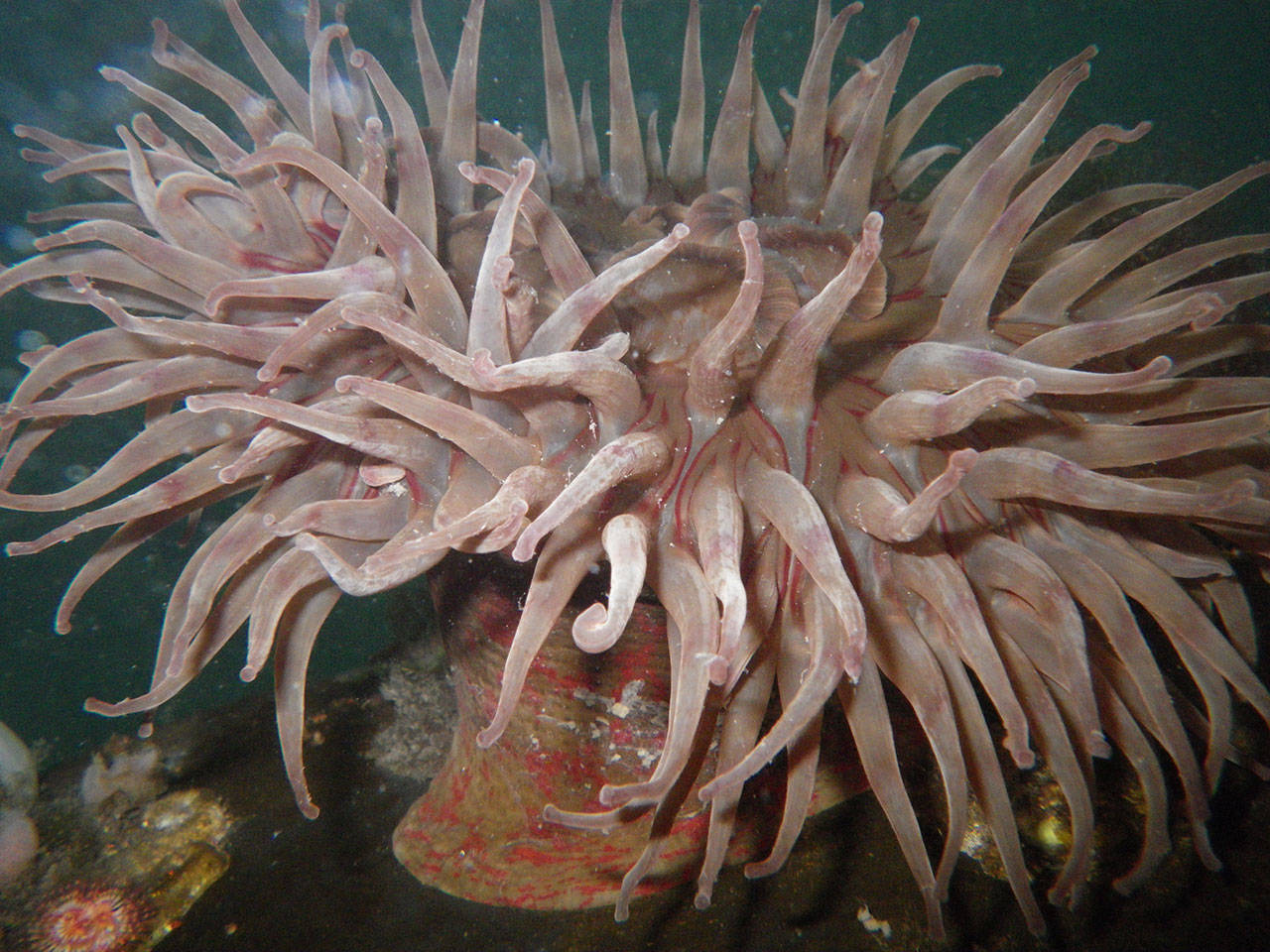Submitted by Kwiaht
Did you know that boats in Friday Harbor share the docks with 15 species of sea slugs, 10 species of sea squirts, sea urchins, sea cucumbers, and at least one native species of coral?
Discover the surprising diversity and resilience of marine life in Friday Harbor at a special slideshow presentation at the San Juan Island Library on Wednesday, July 12, from 7 to 9 p.m., featuring Kwiaht ecologist Russel Barsh and San Juan Island volunteers of Kwiaht’s Friday Harbor Marine Health Observatory. The event is part of the San Juan Island Library’s “Wild Side” series featuring the ecology and wildlife of San Juan Island.
Local volunteers have walked the docks monthly since 2010 collecting systematic data on dozens of marine invertebrate species that offer clues to changing conditions in the bay. Students at Friday Harbor High School and Spring Street International School have also contributed to the project by conducting studies of contaminants in sediments and wildlife.
“More than 100 islanders from the ages of 9 to 90 have made this report on the health of the bay possible,” Barsh said. “This is community-based science that gives people greater understanding and control of environmental quality.”
The Friday Harbor Marine Health Observatory is one of seven place-based Kwiaht projects around San Juan County that conduct long-term monitoring of sensitive ecosystems affected by development, public use, and climate change. Three projects focus on the county’s Urban Growth Areas where there are commercial waterfronts as well as protected shorelines. At Friday Harbor, Barsh said, concerns include contaminated street runoff; fuel and bilge spills from boats; physical disturbance from wakes, crushing and scraping; restricted water circulation; and warming waters.
“Different parts of the port of Friday Harbor are exposed to different stresses, allowing us to compare their impacts on the same marine ecosystem,” said Barsh.
Marine animals are most diverse and abundant in parts of the harbor that are farthest from sources of pollution and have better circulation (more rapid dilution), but there are exceptions. The sewage treatment plant outfall creates a small “oasis of abundance” for sea anemones, while sea slugs appear to be attracted to pilings around the fuel dock.
“On the whole,” said Barch, “the port is a complex structure with a dynamic, varied marine ecosystem that is lively but very different from what we would expect to see on an unmodified rocky shoreline. The challenge for architects and engineers is building ports with materials that facilitate the assembly of productive reef communities that coexist with boating.”
Come to the library on July 12 to learn more about “green” port design, pick up your own free copy of Kwiaht’s identification guide to marine life beneath the Friday Harbor docks, and consider joining the corps of local dock walkers and student researchers that will carry on the monitoring and assessment of our working waterfront in 2017-18.
The Friday Harbor Marine Health Observatory gratefully acknowledges the support of the Port of Friday Harbor and many individual San Juan Island donors and volunteers. For further information, contact kwiaht@gmail.com.



